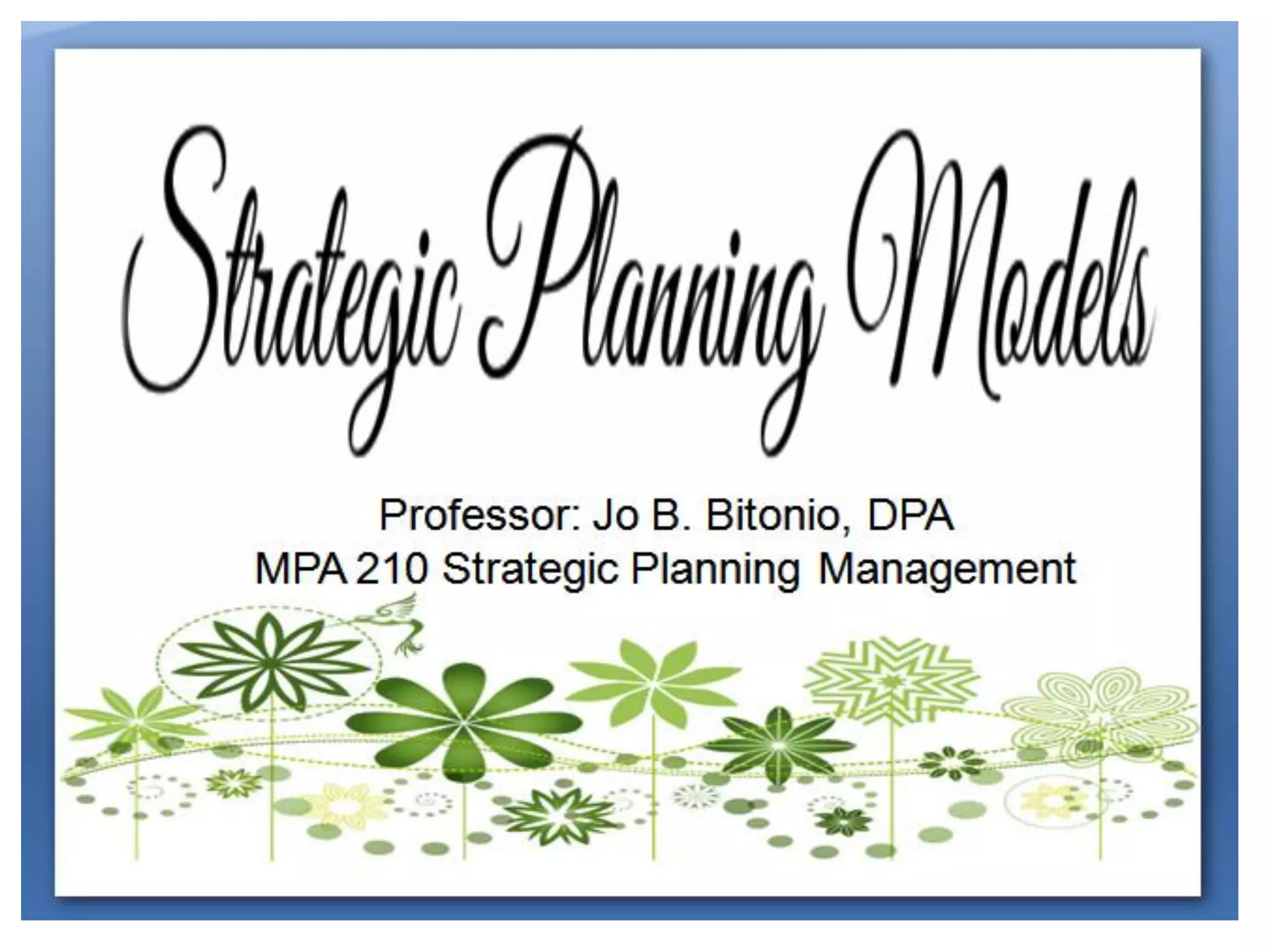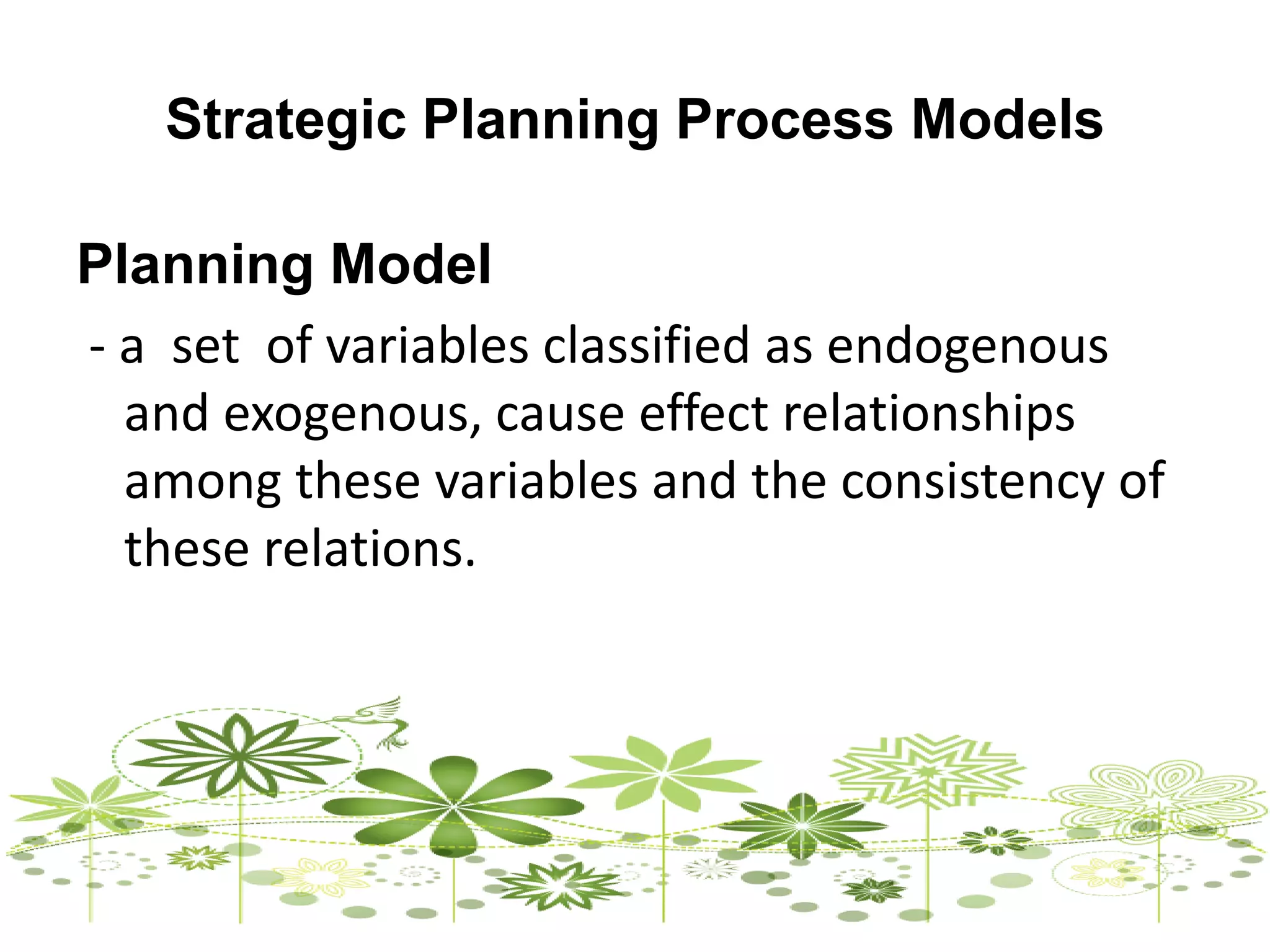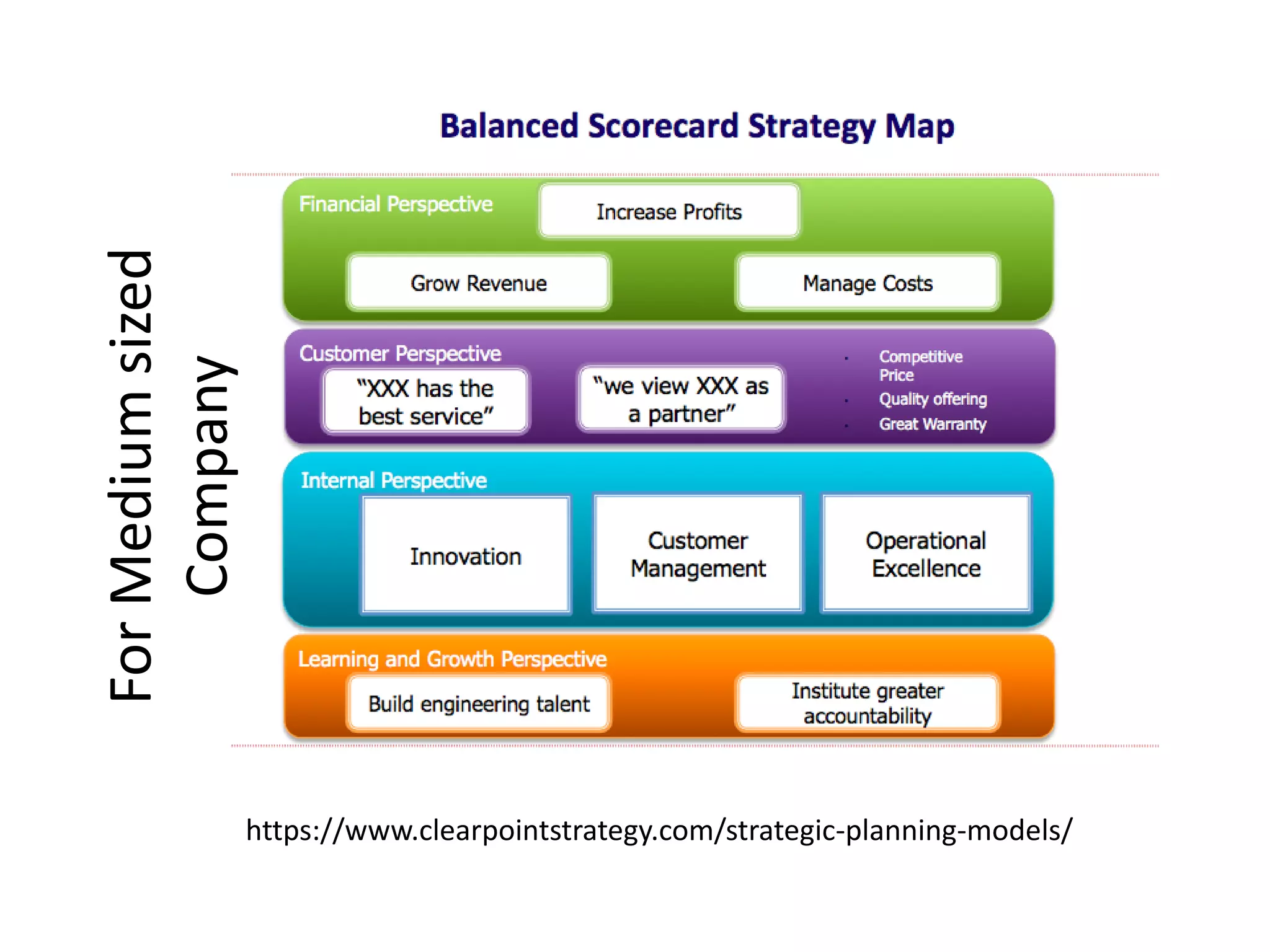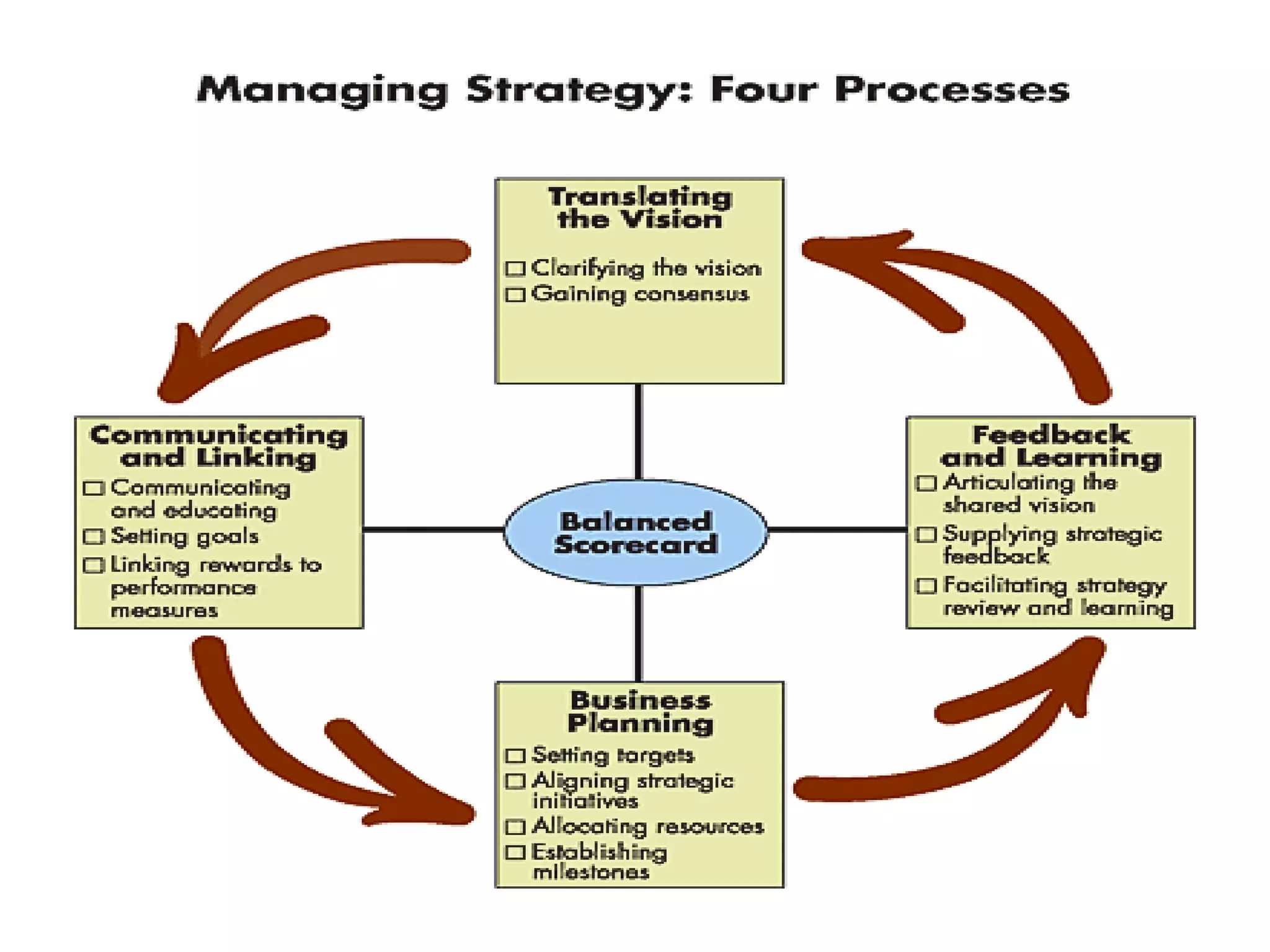The document discusses several strategic planning models that can be used by organizations, including the Strategy Map, Balanced Scorecard, SWOT Analysis, PEST Analysis, Gap Planning, Blue Ocean Strategy, Porter's Five Forces, and VRIO Framework. It provides overview and examples of each model. The models can be used to analyze internal/external factors, identify goals and measures, compare current/desired states, explore new market opportunities, and evaluate competitive advantages. While each has strengths, the best model depends on an organization's specific context and needs.


















































